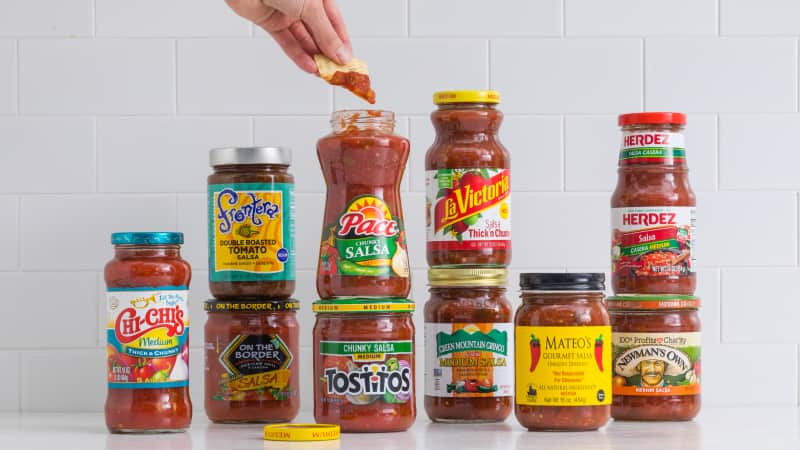Salsa Macha
Taste Test
We love this condiment when it’s homemade, but jarred salsa is more convenient. Which one should you bring home?
Published Aug. 10, 2021. Appears in America's Test Kitchen TV Season 23: Puerto Rican Cookout

Americans love salsa—even more than they love ketchup. In terms of dollars spent, salsa has been the most popular condiment in America since 1992, when the New York Times declared, "ketchup, long the king of American condiments, has been dethroned.”
Salsa dates back to the time of the Aztec Empire, which was located in present-day Mexico. For centuries, it was made at home—often every day, and with local ingredients. It’s a broad category (salsa means “sauce” in Spanish), and Mexican cuisine is rich with different styles and formulations, many of which are unique to specific regions and dishes. Fresh and cooked salsas provide rich, complex flavor and depth to dishes including tacos, enchiladas, chilaquiles, and eggs. In 1941 the company La Victoria made the first jarred salsa in the United States, based on a recipe from an immigrant family, the La Bacas. Jarred tomato-based salsa became widely available in the United States in the 1980s and quickly turned into a supermarket staple. A bowl of salsa and tortilla chips became a classic pairing in the States (but was uncommon in Mexico at the time) and was even named Texas's official state snack in 2003. As Esteban Castillo, author of Chicano Eats (2020), explains, “having chips and salsa as a premeal snack . . . has definitely crossed over from the U.S. and has become a lot more common in Mexico.” The conversation about the best ways to use salsa is an ongoing discussion between people living in Mexico and those living in the United States.
For eating with tortilla chips and so much more, we always have a jar (or two) of salsa on hand. In this tasting we focused on medium salsas, looking for present but harnessed heat. We identified 10 top-selling, nationally available salsa brands based on sales data from IRI, a Chicago-based market research firm. Many of these brands make multiple versions of medium-heat salsa, so we rounded up all the medium options from each company, tasted them against each other, and included our favorite from each brand in our final lineup of 10 salsas. Twenty-one editors and test cooks sampled the salsas plain and with our favorite tortilla chips and compared their flavor, texture, and heat level.
Even though all the salsas we tasted were labeled as medium-heat, some were considerably spicier than others. The flavors of the salsas also varied a lot. The most important variables were the type of pepper used in the salsa, the amount of sodium per serving, and the presence of additional spices or seasonings. Those made with jalapeños or a mix of jalapeños and milder pasilla peppers were the spiciest. Salsas containing bell peppers...
The mission of America’s Test Kitchen Reviews is to find the best equipment and ingredients for the home cook through rigorous, hands-on testing.

Carolyn is a senior editor for ATK Reviews. She's a French-trained professional baker.
This is a members' feature.
0 Comments